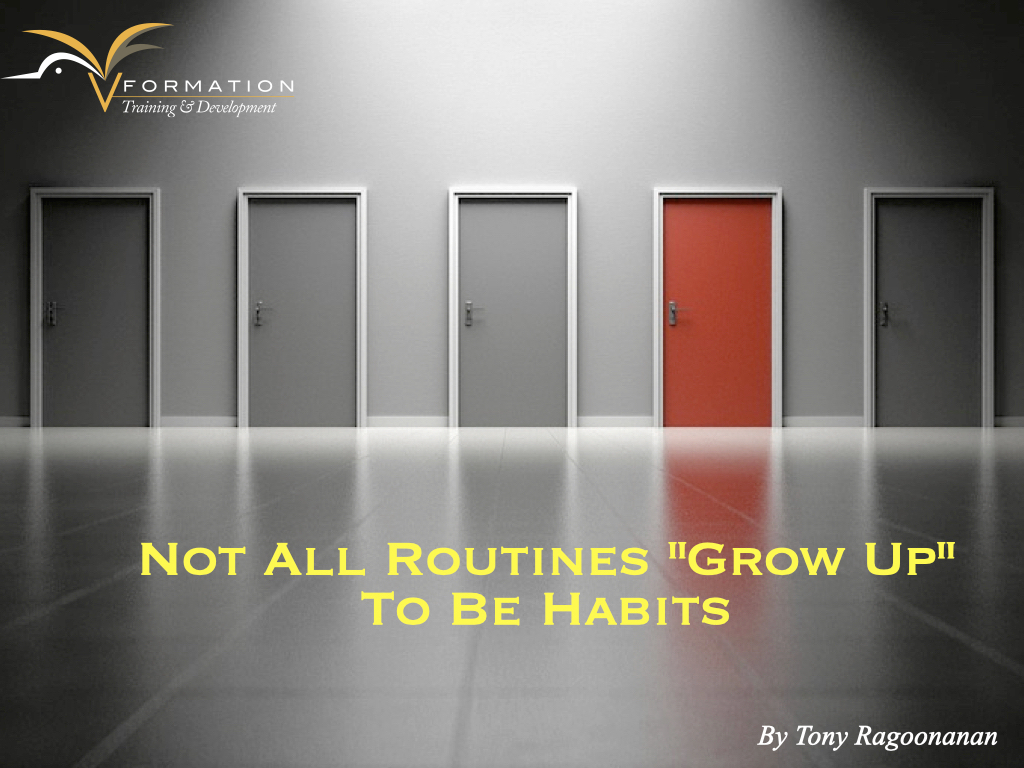
Blog
SELF AWARENESS: The Root of Connection in the Workplace
The workplace, a maze of sorts, through which we must navigate with a clear view of the days, weeks, and months to come. As many individuals weave their vocational magic, the workplace can be a place where they find purpose and a true calling. For others, it can feel like a never-ending battle of wits where dealing with some fills the environment with an uncharacteristic unease for those who fill the space.
Nevertheless, the one thing that is common in every workplace, is that we have to get things done and what is crystal clear is that we have to get things done through people. It’s therefore a valuable idea to explore the possibilities and examine what can make this process as effective as possible.
Yes, we have a problem to solve. How do we create real, lasting synergy with our teams, while getting things done?
What brings clarity to this process requires self-awareness, social awareness, self-management and relationship management. All of these are elements of emotional intelligence (EI). However, for this post, I will focus solely on self-awareness. Why? Because self-awareness is the single most important component of EI. Without this, none of the other components actually work. After all, we need to be aware of how we ‘show up’ to others.
To help us through this, I would like to bring your attention to a tool that I have used for over a decade now.
It is called the Platinum Rule and I have adapted it a bit but it has been a game-changer with teams.
As opposed to “do unto others as you would have them do unto you,” as the golden rule states, the platinum rule asks you to “do unto others, wherever possible, as they would want to be done to them.” It’s about adapting to the differences in people that work and live around us.
Imagine a symphony of voices, each instrument playing its own distinct melody. Just as a conductor harmonizes the orchestra, understanding communication styles allows us to orchestrate our conversations with finesse. Whether you’re a passionate driver, an expressive storyteller, an analytical thinker, or an amiable peacemaker, unlocking the secrets of communication styles will empower you to build bridges of understanding, resolve conflicts with grace, and foster connections that transcend differences.
So, let’s explore this in a bit more detail, as we discover the behavioural styles and how they shape our interactions.
Characteristics of the Behavioural Styles
It is important to note that we are all a combination of all of the styles but we as individuals have a dominant behavioural style on which we rely most of the time.
The following are the 4 styles:
- Driver: the person who takes charge and wants solutions;
- Analytical: the person who values details and accuracy
- Expressive: the idea person
- Amiable: the person who prioritizes relationships with others
Moreover, no style is better than another. Any style can be effective depending on the circumstances.
Let’s take a closer look at each one in detail.
The DRIVER
- Hard-working and ambitious
- Tend to be the group leaders who value getting the job done with excellent results
- Makes decisions quickly
- Hard-driving and good at delegating to others
- They prefer it when others are direct
The downsides of DRIVERS
- They can be bossy, pushy, demanding, dominating, tough and exclude others from decision-making
- Gets impatient
- Does not admit to being wrong
- Under stress, they become autocratic and order others around
The ANALYTICAL
- Thinks carefully before speaking
- Values accuracy in the details

- Persistent, highly organized, cautious and logical
- Focused on process, tasks and structure
- Wants things done the right way
- They prefer a rational approach, solid documentation and careful planning
- Avoids being too emotional
The downsides of ANALYTICALS
- The tendency towards perfectionism
- Can be critical, picky, and stubborn, as well as indecisive
- Under stress, they are likely to avoid others
The EXPRESSIVE
- Enjoys helping others
- Full of ideas and can’t wait to share them
- Talkative and open
- Expresses highly emotional opinions

- Flexible and easily bored with routine
- Optimistic, intuitive, creative and spontaneous and may have a tendency to be flamboyant
The downsides of EXPRESSIVES
- Sometimes stops listening to the other person
- Tries too hard to promote their own points of view
- They can be overly dramatic, impulsive, and undisciplined
- Outspoken nature can sometimes be offensive
The AMIABLE
- Amiable is the relationship style
- Amiables focus on the feelings of other people and effective collaboration
- People with this style are intuitive and care about how situations “feel”
- They like consensus, avoid confrontation, and tend to be timid about voicing contrary opinions
- Amiable people are good listeners, friendly and sensitive and build networks of friends to help them

The downsides of AMIABLES
- Hesitant, unsure of themselves and dependent on others
- Under stress, they yield to the decisions of others
The Caveat
I have put downsides of all of the styles here, HOWEVER, this doesn’t mean that because you’re a particular behavioural style, you automatically have those downsides. In some cases, people have been able to strengthen the downsides of their respective behavioral styles.
There is a lot more to this picture. The questionnaire helps us to understand if we are low-intensity or high-intensity for each style and it also helps us to define our adaptation strategy based on the tensions that exist between the styles.
Tension Among the Styles
Each style, as you may already observe, carries its own melody of priorities and moves at its unique pace. As we delve into this topic, let us explore the interplay between pace and priority, and discover the tension that arises when different styles unite.
Notice that the Driver and Expressive Styles tend to prefer a faster pace; the Amiable and Analytical Styles both tend to prefer a slower pace. Already, you may be able to see the potential conflict. These style combinations will get along well as far as pace is concerned, but watch out for their priorities!
If we focus on the relationship between a Driver and an Expressive, we will see that both are relatively fast-paced behavioural types. Yet the Expresive places more emphasis on people than on tasks, while the Driver tends to pursue goals with less concern for relationships or feelings. Some degree of tension is likely to result in their interaction due to their difference in priority.
Staying on the priority issue, the Expressive’s level of commonality aligns with the Amiable in terms of relationships. Without some awareness and accommodation for their differences in pace, tension may build within the Expressive/ Amiable interaction as well when these two finally do get around to the tasks at hand. The Expressive usually wants it yesterday, whereas the Amiable wants to take a slower and steady approach.
Regarding the goal/task-oriented team of the Driver and Analytical. Because they are task-based, they will be focusing on getting things done, but pace is the issue. The faster-paced Driver likes to make quick decisions. The slower-paced Analytical gets uptight when having to make decisions without an opportunity to analyze fully all the alternatives.
When dissimilar pairings occur, as they often do in many work and social encounters, one or the other of the individuals must make adjustments in their style to avoid increasing tension in the other person. This does not mean you must sacrifice your personality or be a chameleon. Ideally, both people should make an effort to adapt. At times, only one of the individuals may recognize the potential problem, or be sufficiently motivated to do something about it.
When interactions involve styles that differ in both their pace and priority preferences (a diagonal relationship on the model), things really get interesting! In this case, the probability of relationship tension is even greater. This occurs in the Driver and Amaible relationship, as well as in the Expressive and Analytical relationship. To address the issue, the Driver should try to show some concern for people rather than appearing to treat them only as a resource toward goal accomplishment. The Amiable should try to show more concern for task completion, even if it means putting personal relationships aside temporarily. Both individuals should also attempt adjustments in pace and perhaps, meet in the middle with a moderate pace.
The same applies to the Expressive and Analytical relationship. Adjustments should be made in both pace and priority.
The key to managing tension is to know when to expect pace and priority problems, and have a strategy to prevent or deal with these differences.
With greater awareness and adaptability, we can create synergy with the behavioural styles, fostering an environment of collaboration and mutual understanding. This makes a difference in the achievement of synergy, productivity, and culture.
______________
If you are interested in having a conversation to find out more or to have a half-day or full-day session to explore the styles and what we can do to improve our interactions, simply fill in your information by clicking the following link: fill in “Workshop” in the “and I will get back to you within 24 hours.
These activities will mark the beginning of the increased awareness that you will gain in order to understand yourself as well as others.

Tony Ragoonanan is the Founder of V-Formation Training & Development. As a Trainer and Performance Management Specialist, he helps individuals and organizations to align emotion, skill, and behaviour with outcomes. Outside of this, it’s all about family, football, and fitness!!
868-681-3492 | tonyr0909@gmail.com




Leave a reply